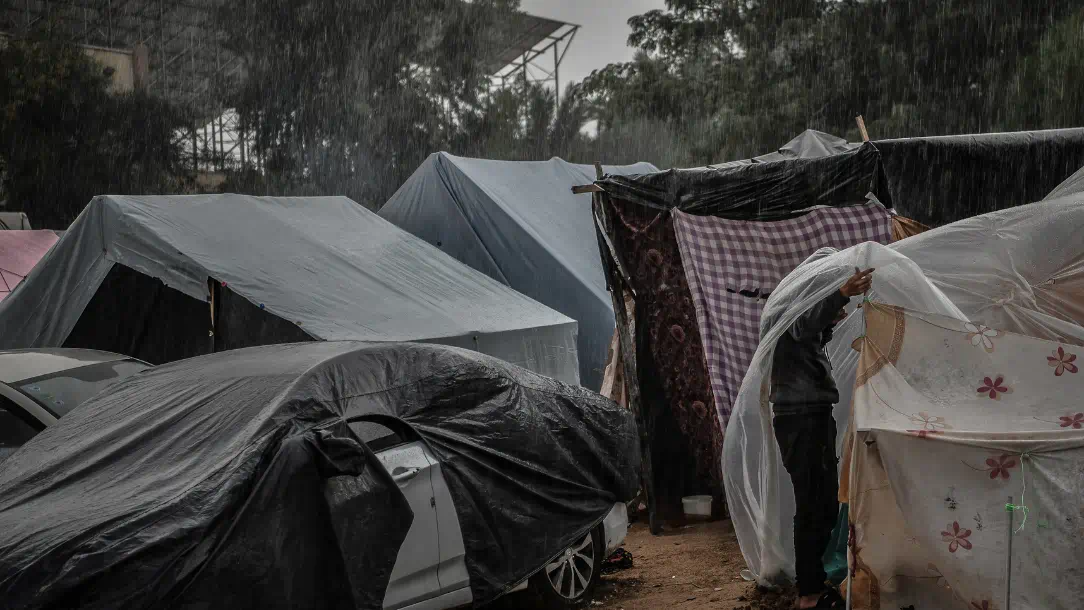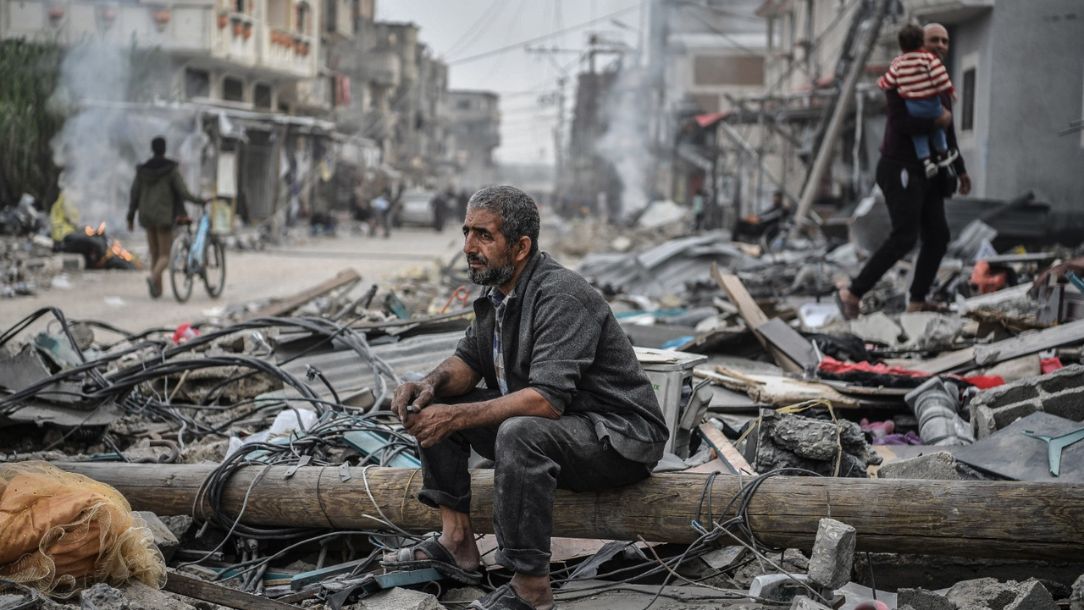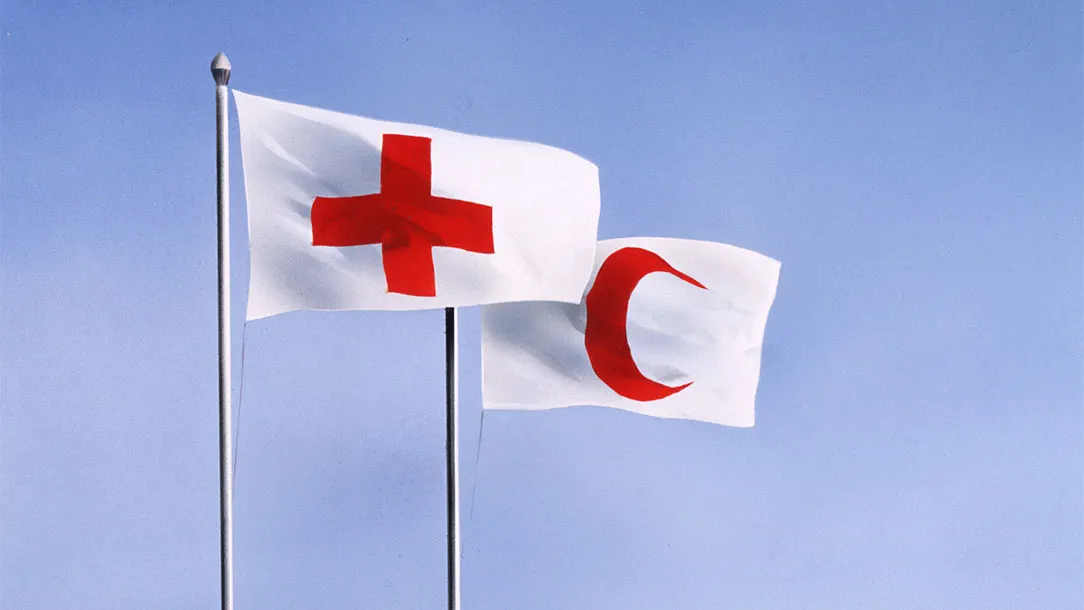Broken healthcare and disease in Gaza could kill more than conflict
Health workers, including teams from the Red Cross Red Crescent Movement, continue to risk their lives to save others in Gaza. They must be protected at all costs. #NotATarget
Last updated 15 March 2024
“It’s just the relentlessness of seeing so many destroyed lives and shattered bodies – particularly of children.”
In video diaries recorded from the European Hospital in Khan Younis, southern Gaza, chief surgeon for the International Committee of the Red Cross (ICRC) Dr Tom Potokar describes one terrible story after another.
A young man who had lost all his family came in with forty per cent burns. He desperately needed a blood transfusion, but there was none to give him. The burnt bodies of children he’d treated. Full lists of patients he can barely help due to a lack of medical supplies. There are worse.
As the diaries go on, Dr Potokar’s voice cracks from frustration, tiredness etched on his face.
Watch Dr Tom Potokar describe conditions inside the European Hospital in Gaza
Donate to the Israel and Occupied Palestinian Territory AppealExhausted medical teams in Gaza have been continuously operating and responding for nearly six months now. They continue to work in horrific conditions and with a severe lack of supplies.
Countrywide, Gaza is now at risk of a complete medical shutdown. Hospitals are overwhelmed by the sick and wounded. And stocks of medicines and medical supplies are running out before they can be replenished. Many are housing thousands of displaced families.
In the north, hospitals including the Palestine Red Crescent Society’s Al-Quds facility, have stopped functioning due to fuel shortages and a lack of safe access. Yet they continue to receive patients who have nowhere else to go.
As more people push into the overcrowded south, the healthcare system falters here too. Health facilities are operating at three times their normal capacity and supplies and fuel have almost run out.
The European Hospital is one of the few left functioning in Khan Younis. And it’s only partially functioning.

Jana survived an airstrike which toppled her home in Gaza. Her same-age cousins did not survive. She received treatment for her injured eyes at the European Hospital in south Gaza and now lives in temporary shelter with her dad. PHOTO: Stephen Ryan/ICRC
Women and people with health conditions at risk
It’s not just the wounded who are at risk but people with long term conditions, such as kidney failure, cancer or diabetes, as there is no continuation of care.
Crumbled health facilities, displacement, collapsing water and electricity supplies as well as a severe lack of food and medicines, are severely disrupting maternal, newborn, and child health services.
Pregnant women are also bearing the brunt. WHO estimates that there are around 50,000 pregnant women in Gaza. Many are displaced, and forced to give birth in unsterile conditions like tents, or worse, in rubble and on the streets. This means many could die from complications like infection.
And without enough working incubators and other medical equipment, the lives of premature babies are also at risk in Gaza.
“We all know the situation is very bad, continues Dr Potokar. There are a huge number of wounded people, and a lot of displaced people.
“As a humanitarian, I feel it is our job to be with these people, bring practical assistance and ease their suffering. I feel privileged to be able to do that.”
Ambulance workers in Gaza

Inside a Palestine Red Crescent ambulance in Gaza. PHOTO: Palestine Red Crescent Society

An injury assessment point organised by the Palestine Red Crescent Society in Gaza. PHOTO: Palestine Red Crescent Society
Palestine Red Crescent Society is providing urgent medical care at all costs
Humanitarian organisations are desperately trying to support medical teams in any way they can, but many can no longer access Gaza.
With staff and volunteers rooted in the community, the Palestine Red Crescent Society is the mandated provider of emergency medical services in the Occupied Palestinian Territory.
Along with specialist ICRC surgeons like Dr Potokar and other ICRC medical staff, they have been providing ambulance and other core healthcare services in extremely dangerous circumstances since the fighting escalated - and long before.
This has included emergency medical care to more than 17,000 people., . Staff and volunteers have also provided community health, health awareness and psychosocial support services to over 165,000 deeply traumatised men, women, and children.

Suzanne, part of an ICRC medical team in Gaza, supports a young boy. PHOTO: ICRC
Suzanne was part of the ICRC medical team at the Al-Shifa hospital in Gaza. Before it stopped functioning, she messaged colleagues and said:
"Tonight it was very noisy. The explosions are coming closer. Whenever I eat something, I feel bad, knowing that many people here have nothing.
“We are so concerned for our colleagues in Al-Shifa.
One of my colleagues broke down in the operating theatre. He got a call that ten of his family, plus his best friend, was killed in Rafah.
“I have nothing but respect for my colleagues here.”
Sadly, many humanitarian and health workers have been tragically killed in the conduct of their duties over the last weeks. Most recently, three members of the PRCS were killed near Al-Amal Hospital and the PRCS headquarters in Khan Younis.
And it was announced that on Saturday 10 February, that two Palestine Red Crescent ambulance crew were killed as they went to transport six-year-old Hind Rajab.
The ICRC has repeatedly called for hospitals, medics, and humanitarian workers to be protected under humanitarian law.
Fighting near hospitals can place health and humanitarian workers in significant danger, as well as causing panic and distress among patients and displaced people seeking shelter.
Aside from providing urgent medical care, the PRCS has also been instrumental in evacuating the sick, wounded, and their families from hospitals that have ceased to function to safe places.
Plunging temperatures and disease in Gaza
Over 30,000 people have now died in Gaza. Over 75% of the country has been displaced.
But this isn’t the only threat. Winter has brought plunging temperatures, and a lack of electricity and fuel, making hypothermia a major concern to people forced to live in tents or on the streets.
It’s a critical time for PRCS. Winter makes things harder in every emergency. Poor weather can make roads treacherous – so it's harder to reach people in crisis, and resources are running out.
Disease outbreaks are another threat. The WHO reported more than 54,866 cases of acute respiratory infections have been reported in November along with 33,551 cases of diarrhoea, which are particularly concerning given the high rates of malnutrition.
And unsanitary conditions also mean that wounds are getting infected, and basic medication such as painkillers and antibiotics are now scarce.

More than 85% of Gaza is now displaced. People are living close by in tents and other makeshift shelters, which is causing disease to spread. PHOTO: Abed Zaqout/ICRC
On a visit to the European hospital in Gaza last year, the chief executive President of the ICRC, Mirjana Spoljaric said:
“The things I’ve just seen are beyond anything that anyone should be in a position to describe. What shocked me most were the children with atrocious injuries and who had lost their parents.
“We have to find solutions to this. We can’t turn away from what is a moral failure facing the international community.”
How to help people in Gaza and Israel
Help people affected in Israel and the Occupied Palestinian Territory by donating to our emergency appeal.
The Palestine Red Crescent Society, and Magen David Adom in Israel, are rooted in the community and have been working to support everyone affected by the Israel-Gaza conflict since the violence escalated in October, and for many years before that.
Israel and Occupied Palestinian Territory Appeal
Help us provide medical support to people affected by the crisis in Israel and Occupied Palestinian Territory. The situation is critical.
DONATE NOWLearn more about the conflict

What's happening in Gaza? A desperate humanitarian crisis
Civilians are facing a desperate situation in Gaza as fighting continues and clean water, food, medical supplies and fuel are running out. There is immense heartbreak on all sides.
.jpg?sc_lang=en&h=610&w=1084&la=en&hash=E040E90A53D120635A2A99FF90DB3C03)
What is happening in Israel and the Occupied Palestinian Territory?
Find out what is happening in Israel and the Occupied Palestinian Territory and why we have launched our crisis appeal.

Explainer: what is the Red Cross doing to help hostages in Gaza?
As a neutral intermediary, the International Committee of the Red Cross plays an important practical role once the release of hostages has been agreed.